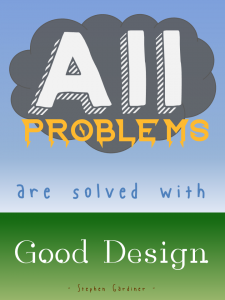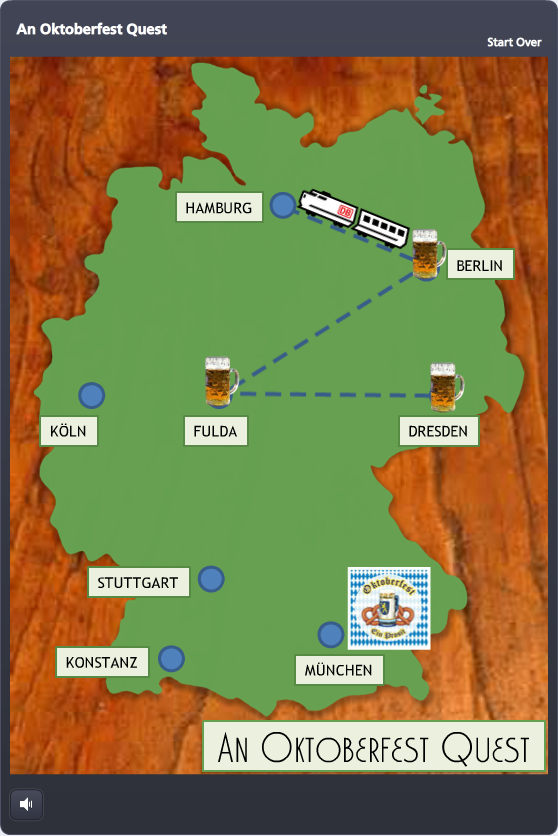 “How did you get started as a freelancer?” is the most common question I’ve gotten in the last 10 years, and it’s a great one.
“How did you get started as a freelancer?” is the most common question I’ve gotten in the last 10 years, and it’s a great one.
There are an infinite number of ways you can get started, and everyone’s story is different. But in case it helps you, or any fledgling freelancers you may know, here’s how I got started and how I continue to build.
My Sneaky Plan
I knew a year or two before taking the plunge that I couldn’t take being an employee anymore. At the time, I was a software and training consultant on the road.
I opted to skip all of the usual fretting and worrying about how to start a new business, how to keep money coming in without a regular paycheck, how to reposition myself in the marketplace, and how to find new clients. Fear and worry are a waste of time. I took the quickest route I could think of.
My brilliant idea was to pick one potential client and sneak up on them. And that’s what I did.
Client #1: They Thought They Were Getting an Intern
I started by finding a certificate program at a local college that included an internship requirement. It was a mostly-online program that took a little over a year, and I completed it in my spare time while traveling for work. I already had plenty of degrees and certificates and experience, so I didn’t need the classes or the certificate. They were fine, but not necessary. The key was the internship.
My strategy was to leverage my well-connected instructors to get into the door of an unsuspecting company that thought it was just getting a contract, freelance intern.
It worked like a charm. As soon as I was approved to find an internship, which was my responsibility to find, I put just one feeler into my network asking for what I wanted. And a connection of one of those well-connected instructors came through.
Within two hours I was communicating with a woman looking for an intern to do instructional design work. She immediately took me on at the “intern” rate, but within a week or two, as soon as I’d finished my first assignment, she took me up to the full rate. I contracted from her for several years. All of those projects were for instructor-led-training.
Client #2: I Built It and They Came
When I decided to transition to e-learning I learned as much as I possibly could about it, invested in the tools, learned the tools, and ever-so-casually mentioned to everyone I talked to that I was now doing e-learning. Within three weeks I got a call from a large company asking if I was available for some e-learning projects, and they’ve kept me busy ever since.
Client #3: Expanding Through Volunteering
As busy as I was, I knew I had to develop more clients over time. So I decided to find a large nonprofit and volunteer my services to design and develop whatever e-learning they might need. They were thrilled. Unfortunately, I’m still waiting for their content several years later – but they stay in touch and are very sweet and always thank me for helping and being on the team. They just can’t get it together.
In the meantime, one of their directors moved to a different nonprofit. I made the same volunteer offer at the new place, and she said she’d let me know if they ever decided to start doing e-learning. A few weeks later she called and said they’d decided and that they’d like me to work on contract. They’ve kept me busy for the last few years, too.
Clients #4 and Beyond
Others have become clients just by sitting next to me at a conference and asking for my card, seeing me on LinkedIn and contacting me to do work (this happens quite a bit), and by word of mouth from current clients.
And just today I may have a new one who saw my work in the Articulate E-Learning Heroes Challenges that David Anderson puts together. (The flowers are on the way!)
 You’ll notice I do no advertising or marketing or promotion, other than getting myself out there a little bit and doing some minor networking in ways that are very natural – including some blogging and tweeting. I put far more of my energy into learning more and doing the best work I can, and everything else just flows.
You’ll notice I do no advertising or marketing or promotion, other than getting myself out there a little bit and doing some minor networking in ways that are very natural – including some blogging and tweeting. I put far more of my energy into learning more and doing the best work I can, and everything else just flows.
But if you’re a natural salesperson and joyful networker – great! My advice is to stick with the approach that feels most natural for you, because that’s the right one.
So that’s how I got started, and that’s how I keep cruising along.
If you’re a current or future freelancer, does any of that help or give you new ideas?









